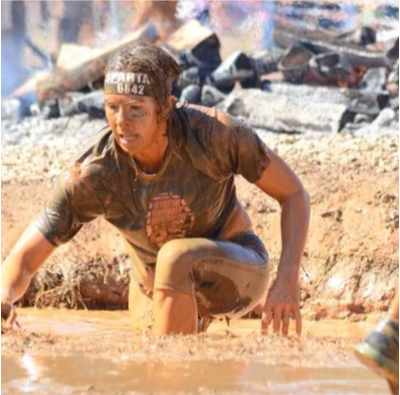AT Spotlight
Erin Brock
Written/Submitted by: Lori Moss
Years Certified: 14 years
Current Position: Industrial Athletic Trainer at Nissan PowerTrain
What you love about athletic training: "I love the versatility of the profession! You never know what to expect for that day, but you have to be ready for anything!"
Favorite Movie: Back to the Future or Harry Potter
Education: BAS Mississippi State University, MS University of Tennessee, Chattanooga
Favorite Sport: Soccer
Why did you choose to practice athletic training as a profession?
“I was born and raised with my twin sister, Kim, in Vicksburg, Mississippi or “the Sip” as I like to call it. I always knew that I wanted to work in sports and with athletes, but I didn’t know exactly what it was called. I asked around, but everyone directed me to Physical Therapy. When I arrived at Mississippi State University, I learned of the Sports Medicine Team. and began as a student athletic trainer. Instantly, I knew I was where I needed to be.”
It is safe to say that most people who become athletic trainers were athletes themselves and dealt with some sort of life changing injury that influenced their path. Erin is no exception. As she says, “I pretty much attempted to play every sport that was available to me, but mostly focused on soccer and softball. I remained injury-free for the most part until college. Although there was that one time I slammed my hand through the window at the house. Thanks, sis, for locking me out! The nurse cleaned the wound, and with just a dab of super glue I was good to go!”
At Mississippi State University, Erin played a handful of intramural sports, as well as joined the women’s rugby team. This is when her injuries began! She had multiple sprained ankles, a groin strain, a quad tear, and a head injury. During graduate school, Erin played with the local women’s football team, The Chattanooga Locomotion. “I had my fair amount of sprains/strains, as well as a dislocated finger (that I relocated myself, taped it up, and jumped back in the game)”, she recalls.
“I knew I wouldn’t be able to participate in sports for the rest of my life, so I wanted a career that would keep me near the game and the athletes. Being an athlete myself has helped me relate on a personal level to the athletic community. I love the versatility of the profession! You never know what to expect for that day, but you have to be ready for anything!”
Who influenced you in the world of athletic training and why?
Mary McClendon, Steve Smith, and Paul Mock at Mississippi State University. They took a chance on me and were very patient, always had an open-door policy for questions and learning which gave me the skills necessary to prepare me for graduate school.
Steven Carpenter at Erlanger Sports Medicine was also a huge influence on the person that I am today. He is very knowledgeable, and well rounded when it comes to real life situations (things that you don’t really learn in school). When you get out into the real world, dealing with situations, whether it is an injury, a skin infection, a hostile coach, a concerned parent, etc... Steve was there to help teach and guide me on a wide range of skills from how to handle certain injuries to how to maintain my professionalism within the workplace. I will be forever grateful for his patience, his mentorship, and his friendship.
Being an athletic trainer in a non-traditional setting
Why did you choose to transition to industrial athletic training?
The main reason I transitioned into the industrial setting is because I felt like I was getting too comfortable at the high school setting. The hours, late nights, weekend tournaments and clinic duty with a salary discrepancy played a role in my decision to transition. I love this profession, but I felt like I needed something different.
What are the major differences between industrial and traditional athletic training?
The major differences are that we work within OSHA’s first aid guidelines. There are certain aspects of the traditional setting (i.e. e-stim, ultrasound...) we are not allowed to perform in the Industrial setting due to these guidelines. We do a lot of proactive preventative care, and ergonomics (just to name a few). We enhance the productivity of the assembly workers by being available to them on site to perform hands on care as well as give them live ergonomic feedback while they are performing their job.
How would you improve the knowledge of industrial athletic training to the community?
Reach out to ATs in the setting for an open discussion/forum about how we can inform the community as well as work with Athletic Training Programs, annual class presentation about the Industrial AT life! Also, being apart of University Career Fairs, it's a great resource for reaching out and networking within the job market.
Advice to new graduates
Be more proactive with the hands-on training, and continue to learn new skills. There are a lot of different techniques out there, and just because you are taught of one them, doesn’t make it the best one available. Don’t be afraid to ask questions! Even when you think it is not relevant or dumb, you don’t know until you ask. Many veteran ATs have seen and dealt with so much in their career, and they can help guide you, or at least show you something from a different perspective.





